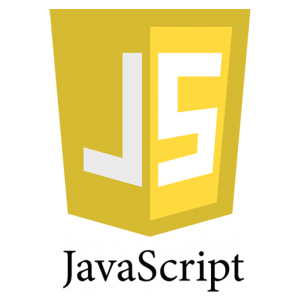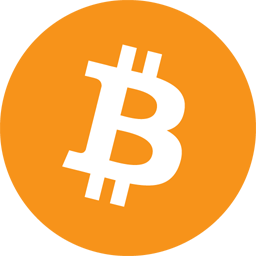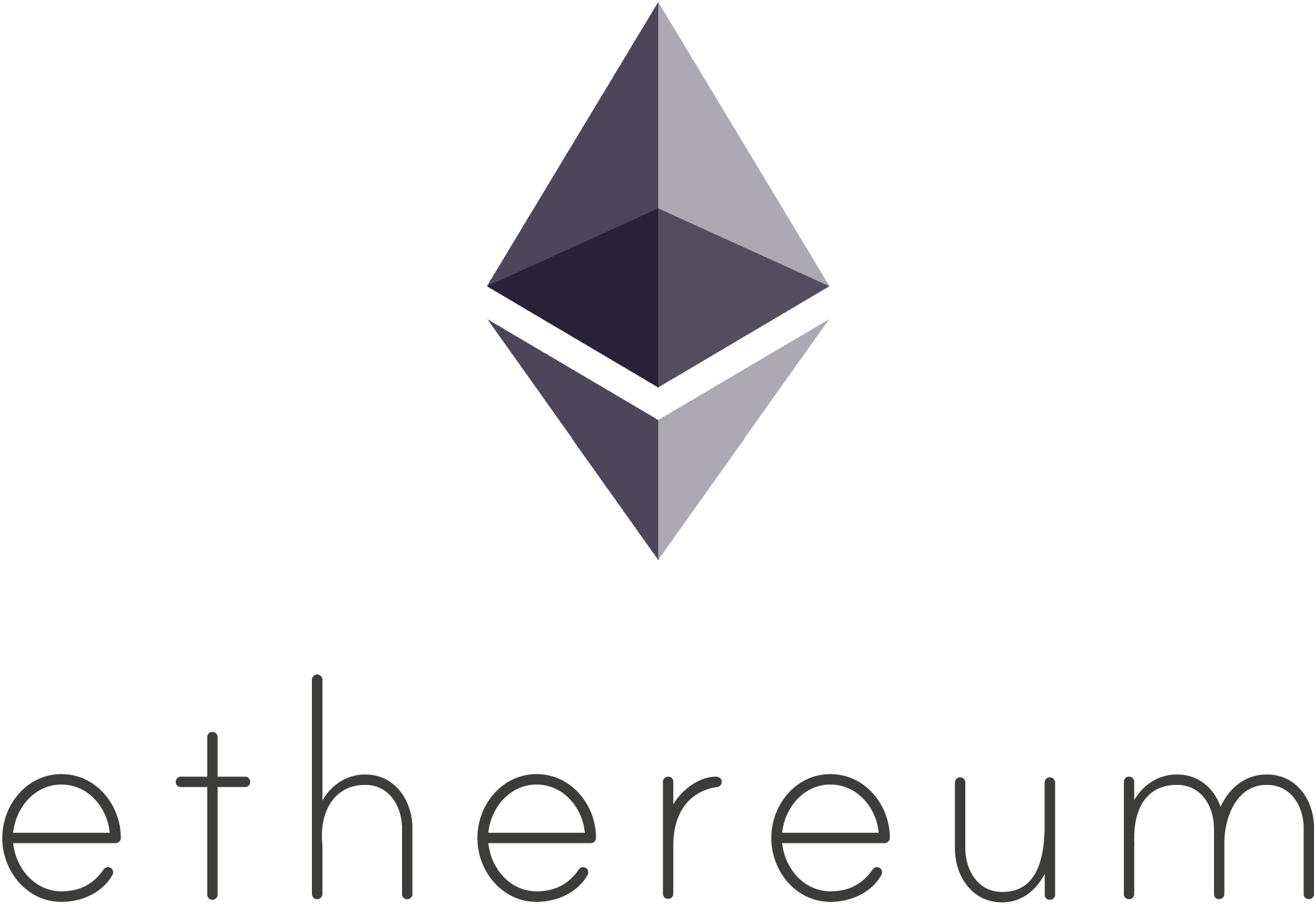Blockchain technology is revolutionizing the way the world’s legal and economic systems operate. It's taking the world by storm and, while the technology is rapidly growing, so is the vocabulary surrounding it. It can be difficult to keep up.
Prepare to talk about blockchain like a pro by reviewing these 128 glossary terms.
Actor
In the blockchain industry, any entity that is capable of participating in an action or a network.
Address
In the blockchain industry, the public address of a private key. Addresses serve as an actor's or an account’s identity and are typically represented in hexadecimal notation.
Application-Specific Integrated Circuit (ASIC)
A type of computer processing chip that performs a singular function.
Due to its specialization, an ASIC is much more efficient and cost-effective than a generalized computer processor that can perform many functions. In the blockchain industry, ASIC boards have been used to perform the SHA256 hashing required for Proof-of-Work (PoW), greatly outstripping the hashrate of even the most powerful GPU miners.
Bitcoin (BTC)
A decentralized blockchain that specifically transacts tokens between accounts.
Bitcoin is the original blockchain-based cryptocurrency. Bitcoin uses Unspent Transaction Outputs (UTXOs) to store data and a Proof-of-Work (PoW) consensus algorithm.
Bitcoin's base unit token is the satoshi, named after Satoshi Nakamoto, the original developer of the Bitcoin protocol.
Block
A single section of discrete data. Blocks typically comprise a list of transactions or actions to be performed when processing the data in the block.
Block, Canonical
A block that has been included in the primary blockchain and is directly or indirectly referenced by future blocks. Blocks that are not canonical may have been valid but were discarded in favor of the canonical block.
Block, Genesis
The original block in a blockchain. The genesis block has a block height of zero, and all other blocks are intrinsically linked to it.
Genesis blocks can be configurable to create a fork of a chain for purposes such as pre-loading accounts with tokens for a test network or specifying different block parameters.
Blockchain
A method of storing data in discrete sections (blocks) that are linked together. Blockchains specify criteria for what data can be stored in a block and reject invalid data.
The submission of blocks to a decentralized blockchain is governed by its consensus mechanism.
Blockchain 1.0
The generation of blockchain technology that focused on performing simple token transactions. Blockchain 1.0 chains have limited scope and ability, but served to prove the fundamental technologies of blockchains and show that a market existed for those technologies.
Bitcoin was the first of the Blockchain 1.0 generation.
Blockchain 2.0
The generation of blockchain technology that enabled smart contracts and generalized processing on chain. Blockchain 2.0 chains are typically built on Turing-complete programming languages and provide expanded capabilities beyond simple peer-to-peer (P2P) value exchange.
Ethereum was the first of the Blockchain 2.0 generation.
Blockchain 3.0
The generation of blockchain technology that focuses on scalability and interoperability. This generation of blockchain typically enables the use of smart contracts.
Blockchain 3.0 chains are currently in early development with no front-runners as of yet. Two promising Blockchain 3.0 projects are SkyCoin and EOSIO.
Block Depth
A block's position index in the blockchain relative to the latest (most recently added) block. A block that is five blocks before the latest block will have a block depth of 5.
Block Explorer
A software, generally with a graphical user interface (GUI), that allows users to read and analyze the data contained on a blockchain.
Block Height
A block's position index in the blockchain relative to the genesis (zeroeth) block. The 5th block added to a chain will have a block height of 5.
Block Reward
For blockchains with a native cryptocurrency, miners that produce a block are allowed to allocate a designated number of tokens to be spontaneously generated and sent to an address of their choosing. This reward serves as compensation for the miner's support of the network and incentivizes additional miners to join.
BANKING SECRECY ACT (BSA)
Legislation passed in the United States in 1970 that requires financial institutions to assist government agencies in detecting and preventing money laundering. BSA requirements include mandatory reporting of certain activities, record keeping for all customers, and limitations on what kind of monetary instruments may be purchased or exchanged.
BYZANTINE FAULT TOLERANCE
The ability of a network to properly reach consensus at any time, assuming that no more than 1/3 of its actors are malicious.
CERTIFICATE AUTHORITY (CA)
A centralized authority that correlates identities with a public/private key pair in a private key infrastructure.
Example
On the internet, a certificate authority is responsible for providing a website’s security certificate and determining whether it is valid, allowing servers to prove the site belongs to a specific domain.
Closed Source
Closed source software is proprietary software with source code that cannot be accessed by the public. The compiled binaries may be available in the form of an executable program (files that end in .exe, .dpkg, etc.) but are not human-readable or available for modification by anyone but the original software developer.
Compare to open source.
Coin
See Token
Coin, Stable
See Token, Stable
Coinbase (Company)
Coinbase is a U.S.-based cryptocurrency brokerage. In terms of customer base and transaction volume, Coinbase is the largest exchange in the United States and one of the largest in the world. However, compared to other exchanges, it maintains a small number of cryptocurrency offerings, with only a couple dozen tradable cryptocurrencies out of the thousands available in the ecosystem.
COINBASE (MINING)
The coinbase of a block is the address to which block rewards are delivered.
Command-Line Interface (CLI)
A text-based user interface.
CLIs can provide more core functionality and access to system resources than a graphical user interface (GUI), but at the cost of usability. Because of this, CLIs are generally directed toward developers over the average user. They can be used to demonstrate the functionality underlying a program without expending development time building a more robust user interface.
CONFIRMATION
The determination of how immutable the information in a blockchain is.
For many consensus protocols, chain reorganizations occur (and are expected) during the confirmation process. Different blockchains have different metrics for what blocks can be considered immutable and therefore confirmed.
Example
If two valid blocks are submitted for the same block height, one of them will eventually be discarded, while the other one will become the canonical block from which future blocks are built. The highest blocks in a chain are more likely to be reordered or discarded, with a probability that is inversely correlated to their block depth.
In some contexts, confirmations refer to the number of nodes that have accepted a transaction, the number of transactions that reference it, or the number of blocks that are above it. In Bitcoin, a transaction has five confirmations when five blocks have been produced after the block containing the transaction.
Consensus
In the blockchain industry, the process by which distinct sections of a network determine a single truth. Blockchain networks use consensus algorithms to establish agreement regarding which blocks are to be added to the chain and which nodes are valid.
Consortium
A private blockchain network run by a company or a group of companies. Consortium chains deal with information that would not be appropriate for public release but still needs to be immutably communicated between two parties.
Cryptocurrency
Digitally distributed and traded currencies for which proof of ownership is established via cryptographic methods. For example, Ether cannot be transferred from an account without having control of the private key that is associated with that account.
Cryptography
The use of math and logical problem solving to encipher or decipher encoded messages. Computer cryptography is heavily reliant upon mathematical proofs and the computational difficulty of specific mathematical problems
Currency
A system of abstract representations of the ability to reconcile debts that is generally accepted or in use. Money is a currency. In the United States of America, the U.S. Dollar is the national currency.
DApp
A decentralized application.
DApps operate similarly to regular web applications; however, they retrieve their state and data from a blockchain network (or multiple blockchain networks). DApps do not require a central web server to function and can communicate to each other over the messaging protocol of the blockchain network(s) to which they're connected.
Decentralization
The movement of data, actions, and other interests away from a single actor in favor of distribution amongst all actors.
In a decentralized system, no actor or group of actors can control the system without the consent of the rest of the actors.
Decentralized Autonomous Organization (DAO)
A company or group of like-minded entities that operate based on the rules set forth in a smart contract. DAOs are used to transform business logic into software logic recorded on a blockchain.
A company whose funds are locked in a multisignature wallet that is controlled by a smart contract is an example of a DAO.
In that same example, board of directors decisions might be voted on, recorded, and effected through a smart contract rather than by holding physical board meetings.
Decentralized Finance (DeFi)
Financial services, such as borrowing, lending, mutual funds, and hedge funds, which are implemented in a decentralized manner. They may be on chain (Layer 1) or on rollups (Layer 2). Aave, MakerDAO, Compound Protocol, Curve, Yield Protocol, and Token Sets are all examples of DeFi.
Directed Acyclic Graph (DAG)
A directed graph structure (e.g., flow chart) that has no recursive routes (i.e., traversing the graph will never go twice through the same route or branch).
In the blockchain industry, DAGs are used to create links between blocks, transactions, and data storage structures.
Double Spend Attack
A malicious attempt to convince two separate parties that one of two conflicting transactions is valid. In such a situation, both transactions appear individually valid, but their combination is not. Thus, only one is included in the blockchain.
Example
Let’s say Alice has only 100 tokens and tells Bob that she is sending him all 100. She also tells Charles that she is sending him all 100 tokens.
Bob and Charles are unaware of Alice's duplicate promises. They assume that their transactions are valid and complete their ends in good faith. However, only one of the transactions can possibly be valid on the blockchain, and either Bob or Charles ends up losing out.
Due to the nature of blockchain reorganizations (natural forks), simply showing that a transaction is included in a block is not enough to verify that it is immutable. Transactions are only immutable once they have reached a depth in the chain where a chain reorganization is unlikely to affect them.
Double spend attacks can be mitigated by waiting to ensure that a transaction is confirmed by the network and is acceptably immutable before acting on it.
EOSIO
EOS is a Blockchain 3.0 chain that focuses on transaction throughput. It uses a Delegated Proof-of-Stake (DPoS) consensus mechanism and web assembly (WASM) for smart contracts.
Ether (ETH)
The base cryptocurrency for the Ethereum blockchain network.
Ether is used as the currency to pay transaction fees to miners. It is stored on an account basis, rather than in Unspent Transaction Outputs (UTXOs).
Ether's base unit is wei, and one ETH is equivalent to 1018 wei.
Ethereum
Ethereum is a decentralized Blockchain 2.0 chain. It was the first major smart contract platform and has widespread support from Fortune 500 companies through the Ethereum Enterprise Alliance (EEA).
Ethereum currently uses a Proof-of-Work (PoW) consensus algorithm, but future changes to the protocol will update it to a more scalable algorithm, most likely based on Proof-of-Stake (PoS).
ETherscan
Etherscan.io is a website offering a cross-referenced, browsable view of the Ethereum and related blockchains. You can trace transaction history, debug smart contracts, monitor gas fees, and learn more about how Ethereum works.
Ethereum Enterprise Alliance (EEA)
A collection of medium- to large-sized companies that have publicly committed to supporting the development of Ethereum and the creation of applications for the protocol.
Notable EEA partners include Intel, AMD, Microsoft, JP Morgan Chase Bank, and Microsoft.
Ethereum Virtual Machine (EVM)
A simulated state machine that uses eWASM bytecode to process transactions and perform state transitions for the Ethereum blockchain. Its operation is guaranteed; that is, for any given block, the state of the EVM will be exactly the same on each node in the network, and it is impossible to generate a different state using the same inputs.
eWASM
A web assembly (WASM) version implemented by the Ethereum Virtual Machine that provides additional functionality for blockchains.
Exchange
A service for trading cryptocurrency tokens for other tokens or fiat.
Exchanges are highly regulated in the European Union, eastern Asia, and the United States of America; thus, many exchanges are located in countries with less oversight.
Exchanges are one of the only ways to change cryptocurrencies into fiat and transfer that value into a bank account.
Exchange, Decentralized
A cryptocurrency exchange that is hosted entirely through a DApp on a blockchain.
Decentralized exchanges typically do not allow the exchange of cryptocurrency to fiat. Decentralized exchanges are more difficult than standard exchanges to regulate or sanction.
Fiat
A nationally adopted currency with government support, such as U.S. Dollars or Euros. Fiat currencies are desirable due to their legal status and traditional use.
FINANCIAL CRIMES ENFORCEMENT NETWORK (FinCEN)
The U.S. federal agency responsible for investigating and prosecuting financial crimes, such as money laundering.
FinCEN regulations cover many aspects of cryptocurrency use.
Fork
In the blockchain industry, a unique network created using the same protocol or consensus as a previously existing network. Forks can contain the original network’s state or instantiate their own state.
Forks happen naturally when a blockchain network is not at 100% consensus and resolve when the network reaches consensus.
Forks can also be forced by refusing to adhere to the consensus of the network.
Fork, Hard
A fork that is permanently incompatible with the original network.
Hard forks typically change transaction data structures, consensus algorithms, or add/remove blocks that would not have otherwise been included.
FORK, SOFT
A fork that is compatible with the data on the original chain.
Blocks created on the original chain after a soft fork would be valid on the forked chain; however the reverse does not have to be true.
Example
A protocol upgrade allows transactions to include an additional memo field where no field previously existed. These transactions would not have been valid on the previous version of the chain. However, transactions without that field are still valid formats in either version.
When Ethereum upgraded to the Byzantium version, it was affected through a soft fork.
Gas
In the blockchain industry, a measure of the computational difficulty required to process a smart contract function. More complex functions use more gas.
Gas can be hardcoded values for each opcode (as is the case for Ethereum) or subjective values based on the preferences of the miner (as is the case for EOSIO).
Gas Price
In the blockchain industry, the number of tokens that will be charged as a fee for each unit of gas consumed by a smart contract’s function.
Gas prices allow a network to dynamically respond to changes in bandwidth demand based on market forces.
Gossip Protocol
A process by which actors in a network exchange information with all other members.
When an actor receives new information, it relays it to every other actor it's connected to that does not already have that information. Since all actors are cumulatively connected, eventually they all receive the information.
Graphical User Interface (GUI)
A way of displaying information to the user through stylized, on-screen elements, such as windows and taskbars.
Compare to command-line interface (CLI).
Hash
The output of a cryptographic function that maps inputs to specific, but seemingly arbitrary, outputs. Hashes are used to efficiently identify data.
Hash Collision
Two inputs that map to the same output hash.
While hash collisions are possible, providing two sets of meaningful data whose hashes collide is nearly impossible. Hashes are one-way streets; they can be constructed from data, but data cannot be reconstructed from hashes.
Hashgraph
A decentralized ledger that uses a gossip protocol to communicate transactions and a tangle-style consensus mechanism.
Hashrate
The rate at which a particular machine can perform a specific hashing function.
Hashrate is similar to general CPU speed, but where processor speed is measured based on the number of arbitrary instructions a machine can carry out per second, hashrate is measured based on the number of times a machine can perform that specific function per second, allowing application-specific integrated circuits (ASIC) to have a much higher hashrate than a processor with the same clock speed.
Hash Function
A cryptographic function that maps inputs to specific, but seemingly arbitrary, outputs.
Hash functions and their qualitative differences are an incredibly important field of research in cryptography.
Hexadecimal Notation
The expression of raw data in base 16 (hexadecmial; 0-f), rather than base 2 (binary) or base 10 (counting; 0-9).
Hyperledger
A suite of tools offered by IBM and hosted by The Linux Foundation to create enterprise-level consortium chains.
Initial Coin Offering (ICO)
Much like an initial public offering of stock, an initial coin offering is a way for a tokenized business to generate investment from the public.
ICOs are regulated by the Securities and Exchange Commission (SEC), even if the tokens are not specifically securities because the language used in promoting a sale can serve to classify tokens as a security offering.
ICOs gained popularity in 2017 as a way to circumvent the traditional startup fundraising process. However the lack of functional products from those startups resulted in over 90% of all ICO’d projects failing.
Initial Token Offering (ITO)
See Initial Coin Offering (ICO)
Immutability
The property of data to be resistant to alterations. Immutable data is considered ‘set in stone’ and can be relied upon to remain unchanged for the remainder of time.
Data can be functionally immutable, meaning that it is possible to change it, but it would require prohibitively excessive resources to do so.
Java
Java is a programming language that was developed by Oracle. It can be compiled before runtime or interpreted by the Java Virtual Machine (JVM). Java is a popular programming language for server-side applications.

JavaScript
JavaScript is a programming language that was developed for web pages and browsers but has since found its way into a variety of applications due to its flexibility. It conforms to the ECMAScript and is an interpreted language.
JavaScript can be used to develop both front-end and back-end solutions, making it a popular choice for aspiring full-stack developers.
Mainnet
The largest blockchain network a specific protocol runs, or the most valuable chain as decided by the community.
Mainnets are typically where real value is derived and represent the truest intent of the core developers.
Merkle Proof
The process of traversing a Merkle tree from a leaf to the root, hashing each level with the previous to produce a unique hash for the structure of the tree.
Providing the final hash allows other actors to determine if the data in a Merkle tree is the same as their own.
Merkle Tree
A data tree where the end of every branch (the leaves) is labelled with a unique identifier (a cryptographic hash) for the branch it is on, and every branch is labeled with all of the leaves and sub-branches on it. This redundancy ensures that anyone who has the tree can reliably prove that the data in it is complete and the same as another actor’s tree by simply observing the leaves.
In a typical blockchain, the Merkle tree’s leaves are transactions and the branches are blocks.
Merkle Root
The cryptographic hash of all hashes in a Merkle tree.
In a blockchain, this is a hash of all transaction hashes in the chain. Providing this hash is a succinct way of showing that a chain’s data is complete and in consensus with the rest of the network.
Metamask
Metamask is a software wallet for the Ethereum blockchain. It runs as a browser extension, and supports nearly all DApps, including DEXs, DeFi protocols, NFTs, games, wallet-based authentication, and others.
Miner
A miner is an actor in a blockchain network that has the ability to create and submit new blocks to the chain. Which miner is allowed to produce a specific block may be predetermined, or miners may simultaneously compete to add the next block to the chain.
Miner, CPU
A miner that utilizes its central processor to perform block validation and production. CPU miners are used for mining algorithms that require more generalized processing and cannot be done in parallel (i.e., each operation depends upon the result of the previous one).
Miner, GPU
A miner that utilizes its graphics processor to perform block validation and production. GPU miners excel at mining algorithms that can be performed in parallel and have a limited number of unique operations (such as Proof-of-Work).
GPU miners are several orders of magnitude more efficient at performing parallel mining algorithms than CPU miners.
Miner, ASIC
A miner that utilizes an application-specific integrated circuit (ASIC) to perform block validation and production.
ASIC miners excel at mining algorithms that can be performed in parallel, have a limited number of unique operations, and have low hard disk input/output rates. Algorithms that fail to meet those criteria are known as “ASIC Resistant.”
ASIC miners are orders of magnitude more efficient at processing compatible mining algorithms than GPU miners; however, ASIC miners also cost more to produce and generally have limited supply.
Mining
In the blockchain industry, mining is the process of creating a new block and submitting it to the blockchain.
Mining Pool
A group of miners that agrees to work together to generate the next block in a blockchain before the rest of the network.
Proof-of-Work (PoW) mining pools can increase miner efficiency because the work is distributed, and any invalid work is not repeated by other miners in the pool.
Monero (XMR)
A Blockchain 1.0 chain that uses ring signatures to provide a level of anonymity beyond public key addresses. Only the parties to a transaction are able to determine the data in the transaction, including the amount, sender, and recipient.
Money Transmitting
The movement of value from one person to another through an intermediary.
Money transmitting and money transmitters are highly regulated due to their ability to easily launder money.
Network
A set of actors that are collectively interconnected for a common purpose.
Node
A participant in a blockchain network that is connected to peers and is capable of validating and propagating new blocks.
Node, Full
A node that has the complete state of the blockchain available.
Node, Light
A node that has enough block data to validate the chain but lacks the complete state data for each block.
Opcode
A machine-level instruction for a processor.
Opcodes are extremely basic commands, such as addition, multiplication, and bit shifting. Higher-level programs are compiled from human-readable instructions into opcodes before being sent to the processor.
Open Source
Open source software is software for which the source code that is available to the public.
One of the benefits of open source software is that people from outside the core development team can support it, collaboratively creating new features or fixing bugs. Open source licenses typically include language that prevents anyone from reselling the core code without significant changes.
Compare to closed source.
Oracle (Company)
A company based in California that produces enterprise-level software systems. It is notable for having created the Java programming language.
Oracle (Service)
Services that connect real-world data with blockchain applications.
Oracles are necessary to provide input that cannot be independently verified, such as temperature measurements. Oracles typically rely on the security of a trusted source rather than the security of trustlessness.
Peer-to-Peer (P2P)
Interactions between actors without a central intermediary.
P2P networks allow each peer to connect directly to all other peers in the network. P2P payments transfer value directly between actors without a processor or bank intermediary.
Cash payments are an example of P2P transactions.
Private Key
One part of a public/private key pair used for asymmetric encryption and decryption.
A private key can be used to decrypt a message that is symmetrically encrypted using the corresponding public key. Private keys are kept secret from anyone that isn’t the owner. Once a private key is made public, it is useless as a point of authentication.
PRIVATE KEY INFRASTRUCTURE (PKI)
A set of rules and policies used to manage identification through public-key encryption in a network.
Typically, a certificate authority is also involved to certify that a specific private key corresponds to a specific user or domain. Private keys are typically stored in secure, unique files just for that key, while public keys are broadcast to everyone.
Public/private key pairs are a stronger form of authentication than username/password combinations because the owner of a private key never needs to reveal the private key in order to prove that he or she holds it. A private key can be used to sign messages using symmetric cryptography and probably assert that they came from a specific user.
The principles underlying private key infrastructures are also applied for many zero-knowledge proof applications.
PROOF-OF-LIQUIDITY
A cryptographically signed assertion by a trusted third-party auditor that an actor holds the declared number of resources. Proof-of-Liquidity is used for cryptocurrencies that are pegged to a real-world security or commodity.
Proof-of-Stake (PoS)
A consensus mechanism in which the ability to produce a block is proportional to the amount of the blockchain's native cryptocurrency an actor holds. The more cryptocurrency the actor holds, the more likely it becomes that he or she will be assigned as a block producer.
Proof-of-Stake, Delegated (DPoS)
A consensus mechanism built on the principles of Proof-of-Stake (PoS) in which stakeholders may nominate block producers.
DPoS is useful for pooling stakes, allowing many small-value accounts to meaningfully participate by collectively appointing the same block producer.
Proof-of-Work (PoW)
A consensus mechanism in which actors race to solve a computationally difficult problem in order to win the ability to produce the next block in a blockchain.
Generally, the process involves a degree of randomness that makes it impossible to find a solution based upon previous inputs; the only information obtained from a solution is that the particular solution is valid. Multiple solutions may by valid for solving the problem, although the odds of finding two unique solutions is incredibly small.
While finding the solution to these problems requires significant processing time, proving that a solution is correct is trivial in nature. Whoever solves the problem in the context of a specific block’s data is allowed to submit that block to the blockchain. The network must then start the race over with the updated data.
Proof-of-Work’s security is rooted in the computational difficulty of the algorithm. Because it is an essentially random process to find a solution, the probability of solving the problem is related to the actor's processing speed and the acceptance criteria for the solution (the difficulty). Stricter acceptance criteria reduce the speed at which the network finds a solution, and varying the acceptance criteria can allow a network to control the solution rate.
Example
If a network is producing solved proofs every 10 seconds at 100 attempts per second, and it wants to reduce the time to five seconds, the acceptance criteria can be changed to allow twice as many possible solutions, or the network can double its processing speed.
Let’s say there are 10 good actors with machines running 10 attempts per second, making the total network rate 100 attempts per second.
For a bad actor to replace a previous solution with his or her own, he or she would need to have enough machines to make an additional 100 attempts per second. To take over all production of blocks requires only half of that though; the bad actor only needs to solve the problem faster on average than the rest of the network.
Because this threshold is ⅓ of the total network processing rate, the system is considered byzantine fault tolerant.
PROOF-OF-WORK, DELEGATED (DPOW)
In Delegated Proof-of-Work, the solution-finding process remains the same as in Proof-of-Work, but the actor that finds the solution may assign block-producing rights to another actor.
Public Key
A cryptographic equation or set of parameters that corresponds to a paired private key. A public key can be used to decrypt a message that is symmetrically encrypted using the corresponding private key.
Ring Signature
A private-key-based cryptographic signature that can be decrypted or verified using multiple valid keys.
Ring signatures are used to obfuscate the actual parties to an action or to provide group-level permissions.
Ripple
A Blockchain 1.0 chain that seeks to connect payment providers and banks.
Ripple is backed by a number of large players in the industry, including American Express and Santander.
Scalability
In the blockchain industry, the ability of a network to continue functioning when the number of actors increases to infinity.
Non-scalable networks slow down and degrade as more actors enter the system.
Scalability can be defined in terms of required hard drive space, computational requirements, messaging throughput, bandwidth, and other factors.
Secure Hash Algorithm (SHA)
A cryptographic hashing function designed by the United States National Security Agency.
The specific implementation of the algorithm is denoted by its numeric suffix. For example, SHA256 creates a 256-bit hash digest.
Securities and Exchange Commission (SEC)
A federal government body in the United States of America that is responsible for the oversight and regulation of investments. The nature of some cryptocurrencies designates them as a security under current laws, and they must be registered with the SEC to be legally used in the United States.
Security Token Offering (STO)
A token offering where the token is officially classified as a security, and the token is sold to accredited investors through a regulated exchange.
STOs are registered with the SEC.
SHA256
A secure hash algorithm (SHA) with a 256-bit hash digest.
Simple Agreement for Future Tokens (SAFT)
An investment mechanism for investors to obtain tokens from a project that has not yet launched. These agreements are similar to a Simple Agreement for Future Equity (SAFE) but are denominated in a percentage of tokens rather than a percentage of company equity.
SkyCoin
A Blockchain 3.0 chain that uses an in-development consensus model known as Web-of-Trust and is capable of natively supporting all other blockchains.
SkyCoin can be used to create trustless, ad-hoc mesh networks, eliminating the need for an ISP. According to the developers, it will be able to reach thousands of transactions per second and allow users to maintain only the blockchains they are interested in (e.g., a restaurant does not need to store an auto-body shop’s transaction data).
Solidity
A smart contract programming language built for the Ethereum Virtual Machine. Syntactically it resembles C++ and Javascript and compiles to eWASM.
Smart Contract
Code that is executable within the environment of a virtual machine.
Blockchains use smart contracts in the context of the chain’s state to extend the functionality of the chain and provide trustless program execution.
Smart contracts in blockchains are particularly useful because their outputs are deterministic, meaning anyone who processes a function in a smart contract will get the same output as anyone else performing the same function.
STATE MACHINE
A model of computation.
At any moment, a state machine has precisely one of a finite set of states. Changing to a new state requires transforming it through a state transition function. Blockchains are state machines because each block represents a change to the state, and transactions represent state transition functions.
Compare to Turing machine.
State machines are less powerful than abstract Turing machines due to the requirement of a finite number of states rather than infinite.
Tangle
A consensus mechanism in which transactions must confirm the validity of at least two preceding transactions.
The more a specific a transaction is, the more immutable it becomes. The immutability of a transaction depends on how many transactions refer back to it and how immutable the references are
Testnet
A fork of a blockchain network that has relaxed access requirements in order to allow rapid development of applications without the overhead of a main network.
Testnets can be used to prove out new features before they are deployed to the main chain.
Token
In the blockchain industry, tokens are the generalized base unit of a cryptocurrency. A token is the lowest unit possible; it cannot be divided further.
Token, Non-Fungible (NFT)
Single token units that cannot be combined with others, even if they are the same type. NFTs can be used to represent distinct goods, such as a land deed or a particular piece of artwork.
TOKEN, SECURITY
Tokens that represent a share of a company or other security.
Security tokens have specific mechanisms in place for transferring ownership in compliance with regulations. Similar to preferred shares in a company, security tokens may grant additional rights to their owners, such as voting rights in a decentralized autonomous organization (DAO).
Token, Stable
A cryptocurrency that attempts to remain a fixed value in relation to another currency, typically fiat.
Some stable tokens rely on market forces and arbitrage to maintain a consistent value, while others rely on a ratio of stored value.
Stable tokens reduce the risk associated with the traditional market volatility of cryptocurrencies.
Token, Utility
A cryptocurrency that has a use case beyond simply transferring value between actors.
A cryptocurrency that is used in conjunction with a DApp to perform actions is an example of a utility token.
Tokenization
The concept of translating business strategies, goods, or services into discrete, tradeable units that are recorded on a blockchain or other system.
Physical goods can be tokenized by associating their unique identifiers with on-chain references.
Total-Complete
A functional programming language that is less universal than a Turing-complete language but may have more desirable characteristics due to the lack of non-deterministic functions.
Total-complete languages cannot perform infinite loops. They can therefore be optimized by the compiler, since it always knows the number of iterations a loop will perform. Total-complete functions are guaranteed to provably terminate.
Base SQL is a total-complete language.
Transaction
A singular input into a blockchain that affects some change in the blockchain’s data.
Depending on the blockchain’s implementation, transactions can transfer cryptocurrencies, create log events, or execute smart contract functions.
Transaction Fee
An amount of cryptocurrency, typically a blockchain’s native cryptocurrency, that is charged by a miner to manipulate data on the chain.
Transaction fees are generally variable and heavily dependent upon market conditions.
Example
If many transactions are being requested, and a limited number can be included in a block, a miner chooses to include whatever transactions have the highest profit margins, i.e., the transactions with the highest fees.
Higher transaction fees can be set to incentivize miners to prioritize including a specific transaction in a block.
In the reverse, if fewer transactions are being requested than will fit in a block, miners include all transactions that meet a minimum profitability requirement, and lower transaction fees can be set.
TRANSACTION POOL
A list of all transactions that have been propagated through a network but not yet included in a block.
Transaction pools may vary from node to node based on which transactions they have been made aware of.
Trustless
The quality of not requiring trust.
In trustless systems, bad actors are unable to negatively impact the system without the coordination of the rest of the network. Trustless systems use verifiable information or actions to operate and validate the quality of other actors.
Turing-Complete
Turing completeness refers to the ability of a programming language to simulate a Turing machine.
Turing-Machine
A machine that's capable of performing any algorithm or task that can be accomplished by a computer.
Compare to state machine.
Unspent Transaction Output (UTXO)
In blockchains that use UTXOs, each transaction references a previous transaction's output and consumes 100% of the output’s tokens. The desired payment amount is assigned to the recipient’s address, and ‘unspent’ tokens are assigned back to the owner’s address. This reinforces the immutability of the blockchain, as no transaction may reference a UTXO that has already been consumed.
Virtual Machine (VM)
A computer operating system that is running within another operating system.
Virtual machines can simulate a unique computer on a subset of the resources of a larger machine.
Cloud architectures use VMs to allocate the processing power of large servers to smaller applications.

VYPER
A programming language similar to Serpent that is used to build smart contracts.
Wallet
A file or software that contains the private keys for interacting with a Private Key Infrastructure (PKI).
Typical wallet software has functionality for signing messages and transactions for the corresponding network.
Wallet, Multisignature
A wallet that requires multiple private key signatures to generate a valid transaction.
Multiple actors may share a multisignature wallet, but they may not all have to participate in each transaction.
Example
A group of eight managers may be authorized to use a multisignature wallet for company expenditures, but the wallet may be set up so that a transaction can be completed with approval of any two of those managers.
Web Assembly (WASM)
A binary instruction format for a virtual machine implemented by all major web browsers.
WASM allows developers to add functionality that would otherwise not be possible using standard HTML/JavaScript.
Many high-level programming languages can be compiled to WASM, including C++ and Rust.
Ethereum’s virtual machine implements a version of WASM that provides additional functionality for blockchains, known as eWASM.
Zero-Knowledge (ZK) Proof
A mathematical representation of an assertion whose output value can be determined without the input information.
Zero-knowledge proofs are used to prove that an actor is in possession of certain information without actually revealing that information. They are especially useful in cryptocurrencies because they can be used to show that a transaction is valid without revealing the sender, recipient, or amount of the transaction.
ZK research is still in its infancy.
Your Transformation Begins Here
Contact us today to discover new business horizons with blockchain and distributed ledger technology.
Blockchain Integration
Establish full interoperability between devices and applications in real-time, to deliver performance, reliability, scalability, and security to your enterprise.
Blockchain & AI
Discover new horizons only reachable through the intersection of blockchain and AI.
Blockchain Security
Explore how blockchain enables secure, yet transparent, mechanisms for recording and verifying any type of transaction.









